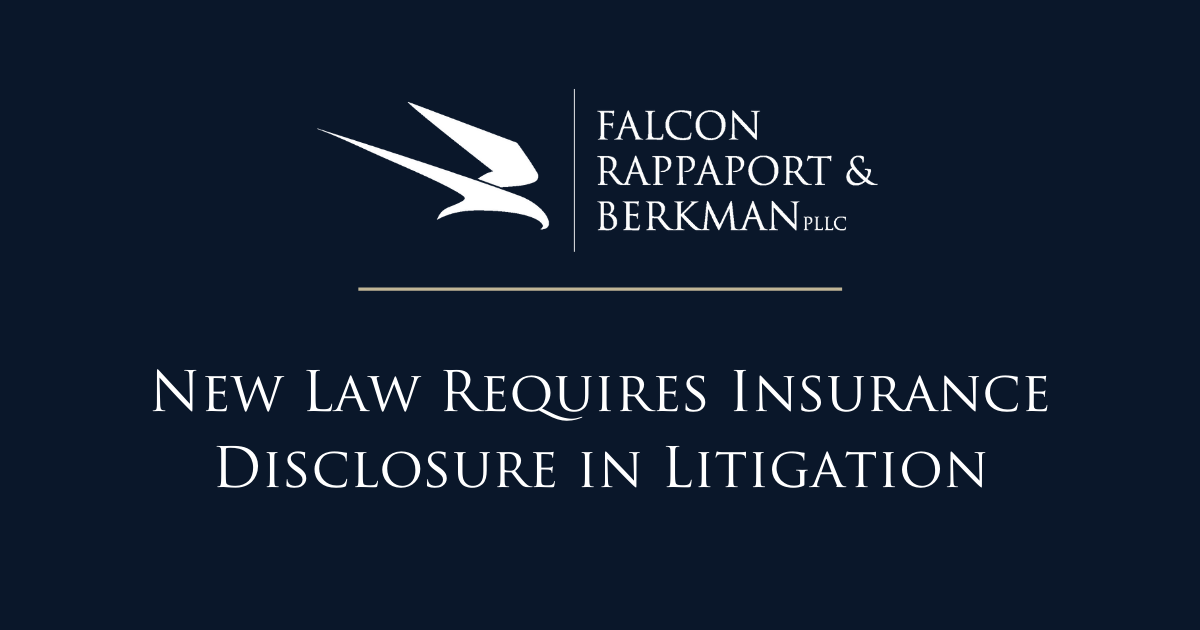New Law Requires Insurance Disclosure in Litigation
New Law Requires Insurance Disclosure in Litigation
By: Samantha M. Compono, Esq. and Paul M. O'Brien, Esq.
On December 31, 2021, Governor Kathy Hochul signed into law New York State Senate Bill S7052. Senate Bill S7052 amends New York’s Civil Practice Law and Rules (“CPLR”) as it relates to insurance disclosures.
Section 2 of Senate Bill S7052, amends CPLR § 3101(f) by requiring any defendant, third-party defendant, or a defendant on a cross-claim or counter-claim to provide any adverse litigation or other party in the action proof of existence ny insurance agreement under which any person or entity may be liable to satisfy part or all of a judgment, as well as the the contents thereof. This information must be disclosed within sixty days after serving an answer pursuant to CPLR §§ 320, 3011, or 3019.
The law also details what information must be produced and obligates any party making the disclosure to make reasonable efforts to keep all information accurate and complete during the course of the litigation.
Despite these new disclosure requirements, defendants need not worry that the existence of an insurance policy signals guilt or liability. The information disclosed under newly amended Rule 3101(f) is not, by reason of disclosure, admissible in evidence.
Section 3 of Senate Bill S7052, adds a new section to the CPLR. CPLR § 3122-b provides that information provided pursuant to CPLR §3101(f) be certified that the information is accurate and complete by a party representative with knowledge.
These changes took effect on December 31, 2021.
DISCLAIMER: This summary is not legal advice and does not create any attorney-client relationship. This summary does not provide a definitive legal opinion for any factual situation. Before the firm can provide legal advice or opinion to any person or entity, the specific facts at issue must be reviewed by the firm. Before an attorney-client relationship is formed, the firm must have a signed engagement letter with a client setting forth the Firm’s scope and terms of representation. The information contained herein is based upon the law at the time of publication.

